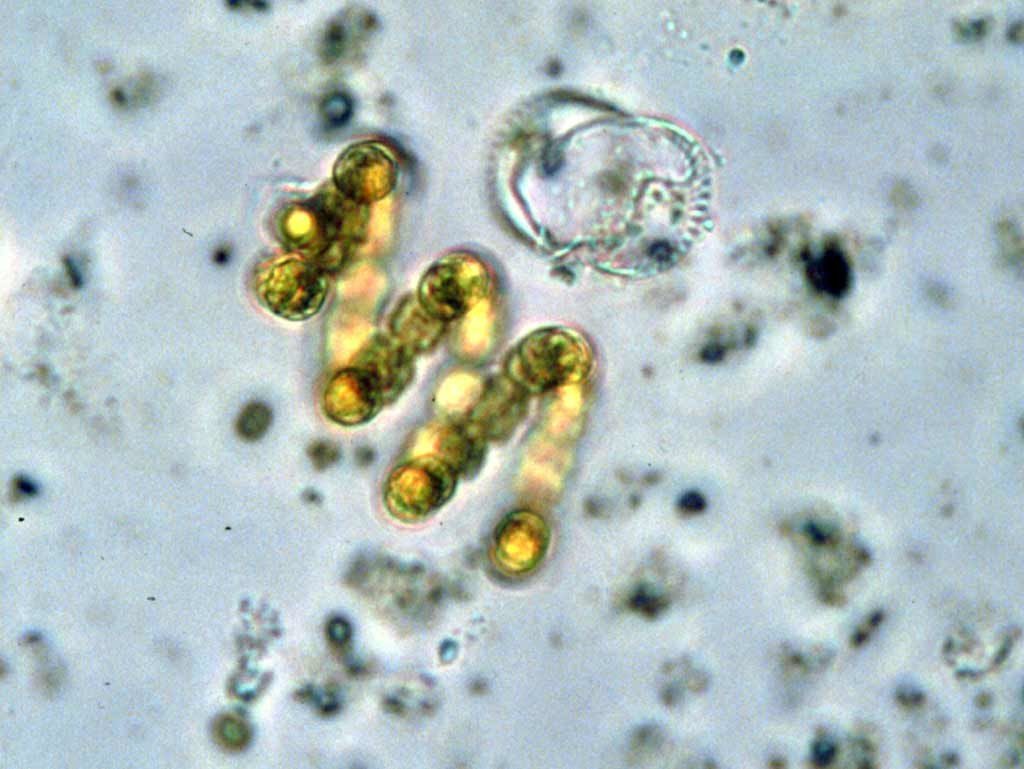What was the Earth like way before the dinosaurs? Scientists are interested in that question for many reasons, but for me, it is because the air back then was very different. If you transported yourself in a time-machine to Earth 3 billion years ago, which is more than 2.5 billion years before the dinosaurs, you’d better have brought a breathing mask and some sunscreen. As the doors of your time machine opened on this alien landscape, you would die (with a sunburn), as there was no oxygen in the air, and the UV radiation would have been brutal. Without oxygen, there would have been no protective ozone layer. However, back then, Earth was teeming with microbial life.
One of the many reasons I enjoy being a deep time geologist is because it’s fun to picture yourself on this ancient and alien landscape (except for the dying part). Imagine the landscape with no grass, no animals, and no trees. Volcanoes dotted the landscape. The Moon was substantially closer and so the tides were stronger. The planet was rotating faster so the days were shorter by a couple of hours, and the air pressure was also likely different. Oh, and the sun was fainter. Yes, even our star was different.
As a result, many scientists including myself consider our ancient Earth to be our “closest” exoplanet. Exoplanets are planets that orbit far away stars. These planets are so far away that humans will not, in the next century at least, be able to land rovers and probes on them the way we do with Mars. However, studying ancient Earth is just as exciting as studying exoplanets (in my very biased opinion) because of the story that rocks can tell us about what early Earth was like. Rocks are the history books of planets and learning how to read them unravels some of the most exciting stories ever written.
One aspect of my research has been to figure out how to read rocks for new information. In particular, I’ve been fascinated with air pressure. Air pressure is valuable because it tells you the maximum amount of gas that can be in the air. This is important for multiple reasons. The first is that it limits which gases could have been present in the air to keep our planet warm. Remember the fainter sun back then? If the ancient air was the same as it is today, our planet would have been frozen over. Yet, there is plenty of evidence in the rocks for liquid rivers, rain, and oceans on the ancient Earth. That means gases in different quantities than today were present in the ancient air, keeping the planet warm. The second reason gets the astronomers excited. Can you tell just from the gases in the air that a planet is alive? This is a very active area of research, and the answer is ‘yes’ in an increasing number of cases.
The “holy grail” of exoplanet astronomy is to unambiguously detect life on another planet. Astronomers do this by measuring are present on those far away worlds, using light. Because ancient Earth was so different than today, and yet was very much alive, the ancient Earth’s air may provide an unambiguous example of a planet that can host life that is different than modern Earth.
In this study led by my student Shaelyn Silverman, we asked ourselves a slightly different question: can life record air pressure? And if so, can you find a fossil of that life in rocks? The answer to that first question and the main result of this study is yes. We grew a form of green algae called cyanobacteria under different pressures of nitrogen (the likely dominant gas of the ancient air) and looked for a difference in shape and in the composition of the bacteria. In both cases, we found differences. The cyanobacteria that we used look like daisy chains of “beads”, where each bead is a cell. Along the daisy chain are slightly larger cells called heterocysts that specialize in processing nitrogen for the other cells to function properly. We hypothesized that the distance between those specialized cells would change with changes in the pressure of nitrogen the cyanobacteria were exposed to, and we were right!
We then looked at the composition of the nitrogen in cyanobacteria grown at the different pressures and found differences too. Nitrogen is composed of different isotopes, which is to say nitrogen atoms with an extra neutron in the nucleus. As a result, there are “heavy” nitrogens and “light” nitrogen atoms. In our experiment, we observed changes in the heavy-to-light nitrogen ratio with changing nitrogen pressures.
Why might this be? Life often follows the path of least resistance. When the nitrogen pressure is high, there is plenty of nitrogen everywhere, and the cyanobacteria will prefer to use the “lighter” nitrogen, as it is easier to process. With decreasing nitrogen, the cyanobacteria don’t have the luxury of being picky anymore, so they have to choose“heavier” nitrogen atoms. This is what causes the ratio of differences that Shaelyn observed.
While these shape changes would be difficult to find in fossils because they don’t preserve well, the nitrogen composition might still be detectable in rocks, so that would be the next step. The goal is to develop a way to “read” old rocks on present-day Earth to tell us something about the air pressure of ancient Earth. Cyanobacteria have shown their potential to contribute meaningfully to this exciting science.


